The Kicker
Blogging sometimes seems like an extended version of tweeting. You blast out your thought(s) du jour to a largely unknown crowd and respond to those folks who happened to read and whose buttons you happened to have pushed. Blogging just involves longer thought trains than tweeting. It’s sort of the interim step between being a full blown (i.e., real) writer and a tweeter.
But sometimes it gets bigger than that. Sometimes, through the interplay of commentary, you learn something cool or you connect with someone you might otherwise never have met. That’s the really fun part — the kicker — to being a part of the blogosphere.
I got just such a kicker recently. Actually, I got a double kicker, though not through my own blog ramblings this time, but rather via the “Comments” section on another.
Those comments were left by Dr. Andrew Schechtman. He shared a bit of his group’s experience as they searched for an EHR. I found his comments on this — and on the current state of affairs of EMRs/EHRs — to be well written and insightful. He seemed a bright light, so I looked for and found him on LinkedIn. I sent a message asking him to chat. We connected via Skype shortly after.
I’m in Ohio; Andrew is in the San Francisco Bay area. I was in a tee shirt and at home as it was later evening for me and I had just hung up from a two-hour conference call. I was tired and hadn’t even had a chance at dinner yet.
Andrew came onto the video call with his stethoscope still draped across his neck. In dress shirt and tie, he closed his office door and said he was just wrapping up patients. I wasn’t sure how this would go since I was beat and his brain was probably still processing the day’s patients and workload.
We started off with the obligatory ”how do you dos” and the “here’s where I come from” stuff. But it didn’t take long to forget my fatigue (and my stomach growls) as the conversation turned to deeper stuff. (Well, “deeper,” if you call HIT “deep.”)
What I found most enjoyable was the demeanor that Andrew exuded. He was an obvious geek, yes, but not in an outwardly obvious way. He was calm, easygoing, considered, and pleasant. He had a good sense of humor and laughed gently. I would wager that his patients would say, “He has a good bedside manner” – confident, but not cocky; caring without being overbearing; lightly delightful.
(Sorta sounds like a man-crush, doesn’t it? Ack. It’s not intended that way; he was just an impressive fellow.)
The first kicker for me (from participating in the blogosphere commentary) was meeting this enjoyable fellow a half a continent away. The second kicker was something he told me while we Skyped.
Andrew was describing his experience with looking at EHRs from various vendors. All the same stuff you hear: too cumbersome, too little “stuffings”, too expensive, too much resistance from his partners, etc. At one point, he had actually adopted one of the better known “free” EHRs and started documenting his encounters even though the rest of the group was still on paper. (He documented digitally and then printed his notes out to stick in the group’s paper chart folders!) But then he started talking about the EHR that he eventually adopted for his group.
He said they had looked at ElationEMR back in 2010 and decided to walk away from it (seeing it as one of the “too little stuffing” EMRs at the time.) About a year later, just as they were just about to go with one of the more widely adopted EHRs – one of the biggies – they decided to give ElationEMR one more look. So much had changed in this startup system, in lots of good ways, that they opted to put their faith in the newbie.
They adopted and implemented. Andrew got the front office up and running with minimal training. In fact, pretty much the entirety of the staff’s training consisted of a little seven-minute Camtasia video he created. (He granted me permission to share it with you, FYI.)
The staff was up and running. Period.
On live day one, after similar minimalistic training, he challenged his partners to “just do one or two patients with it today.”
That day – go-live Day One – with no schedule adaptations, the partners were also up and running, most having documented all of their first day’s encounters on the system. Not just one or two patients, but all of them.
Let me repeat that: not just one or two patients, but all of them.
No downtime. No reduced numbers to accommodate training and workflow adaptation. No major fuss or muss.
That was a real kicker for me. How many EHRs can really and truly be incorporated into a busy practice’s workflow with such little disruption? It’s nice to know it is possible.
Nice to meet you, Andrew, and thanks for the inspiration.
From the trenches…
“The sad thing is he’s a good kicker. He’s a good kicker. But he’s an idiot.” – Peyton Manning (on Mike Vanderjagt)

Dr. Gregg Alexander, a grunt in the trenches pediatrician at Madison Pediatrics, is Chief Medical Officer for Health Nuts Media, an HIT and marketing consultant, and sits on the board of directors of the Ohio Health Information Partnership (OHIP).


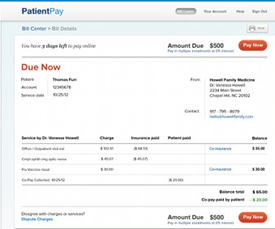
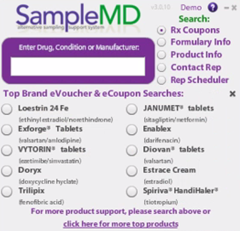

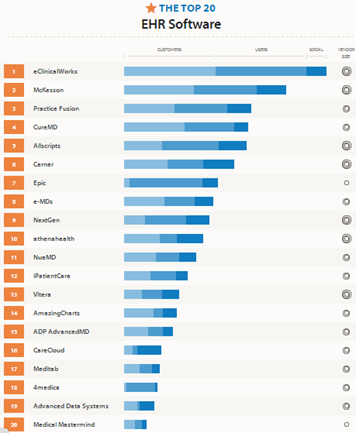




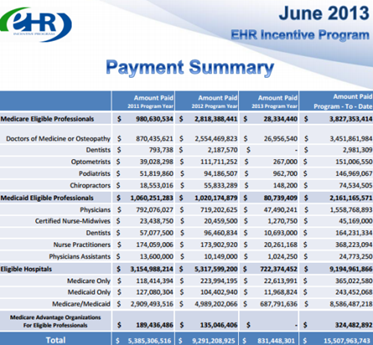



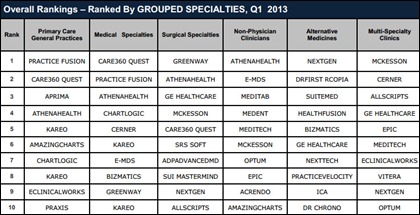
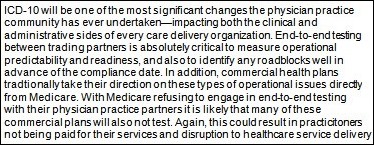




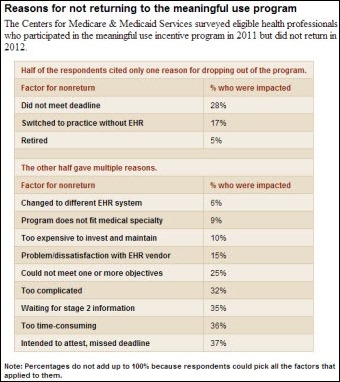

The article about Pediatric Associates in CA has a nugget with a potentially outsized impact: the implication that VFC vaccines…